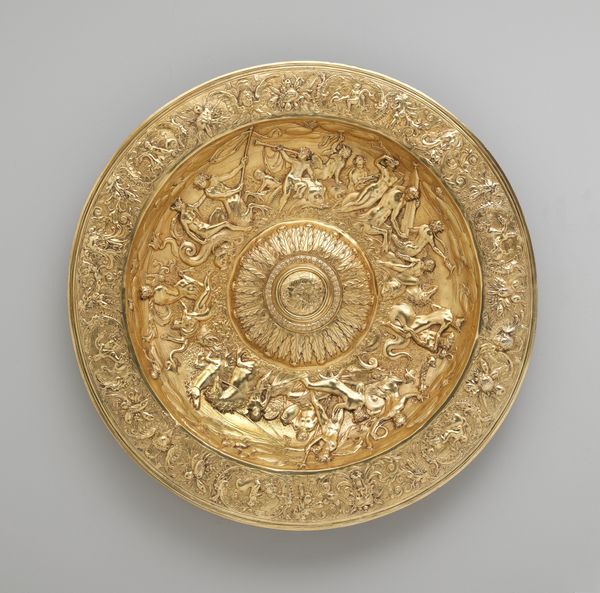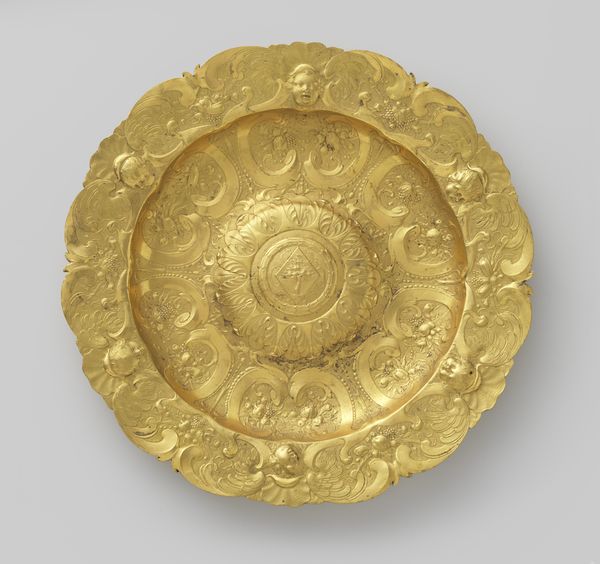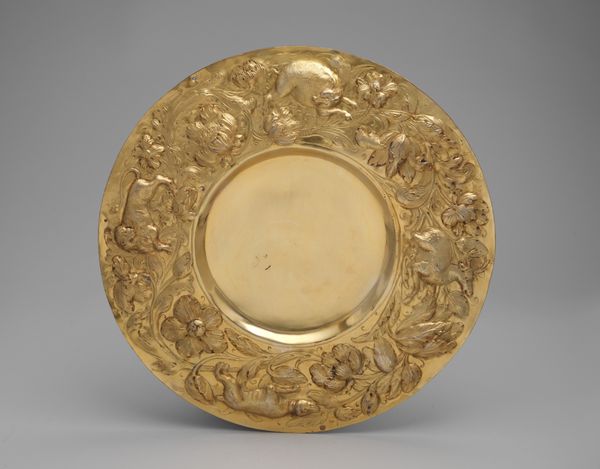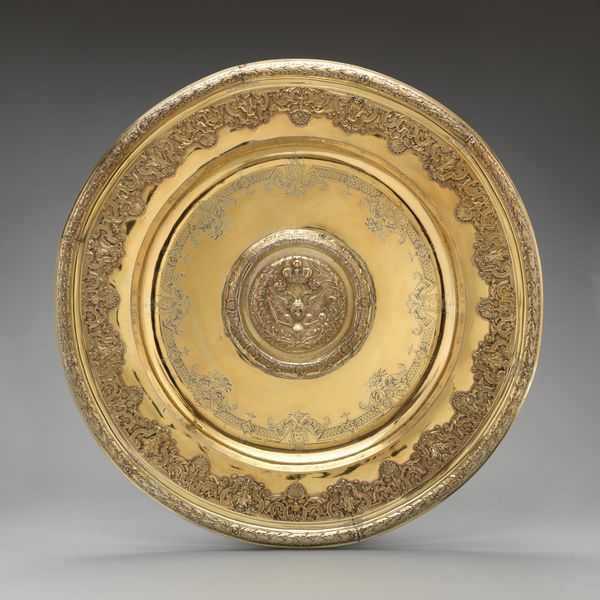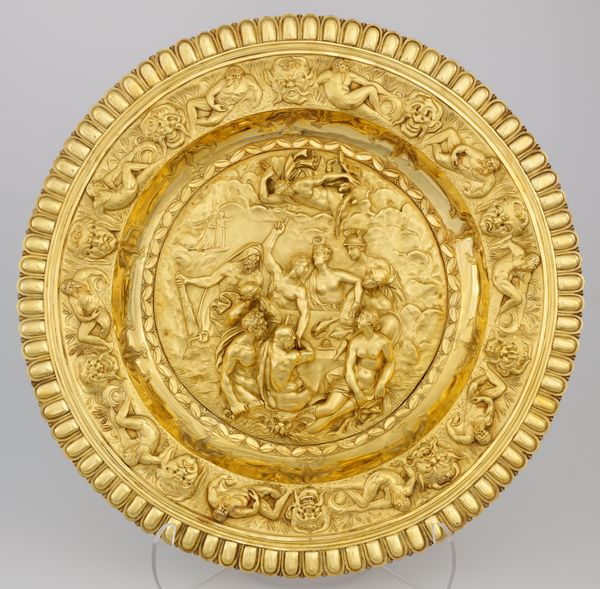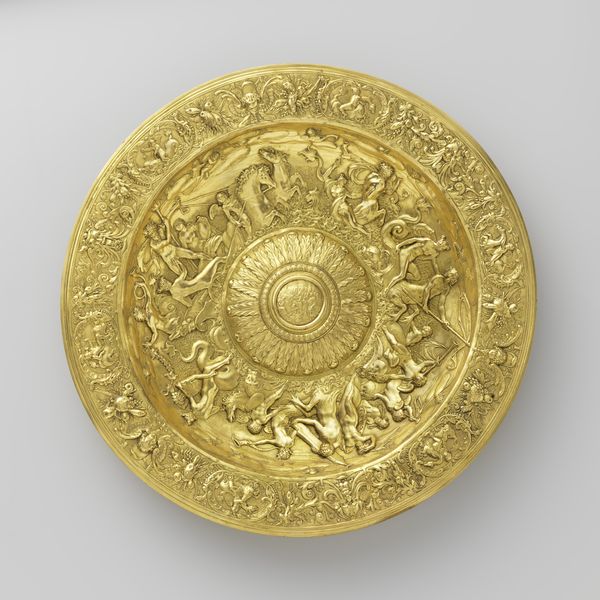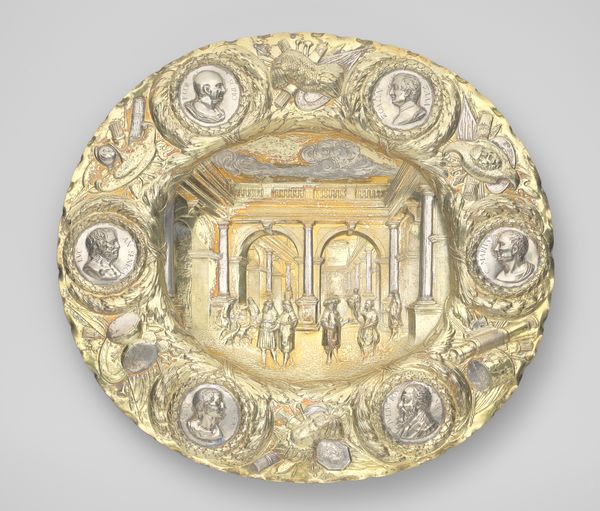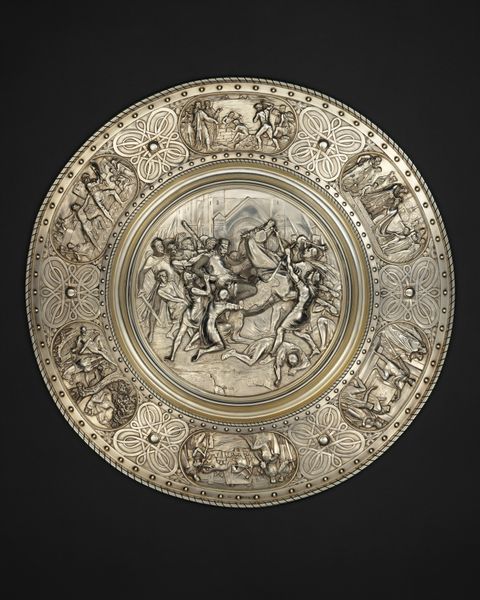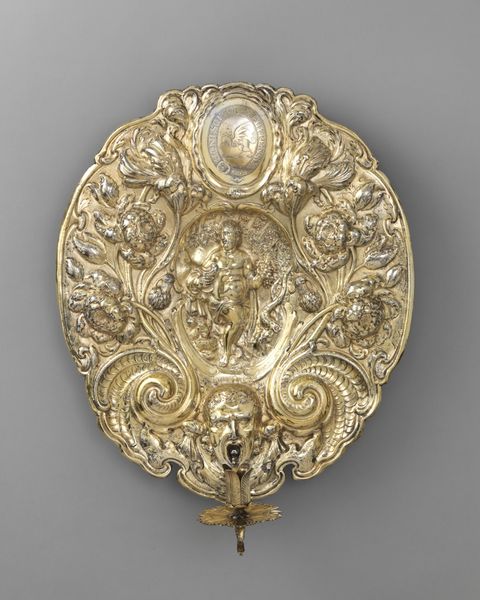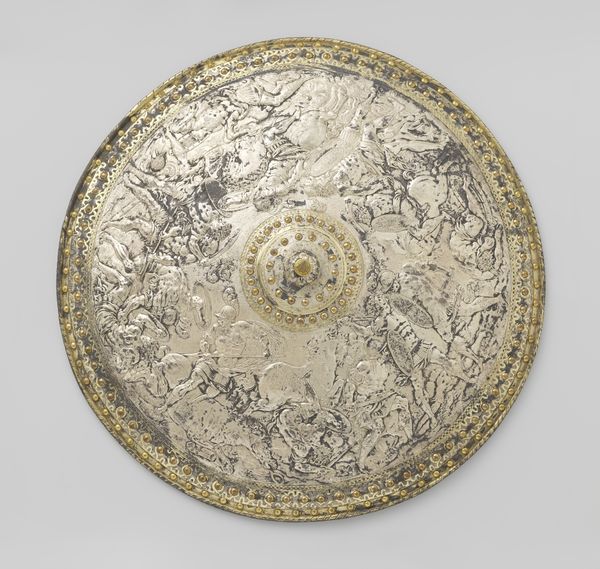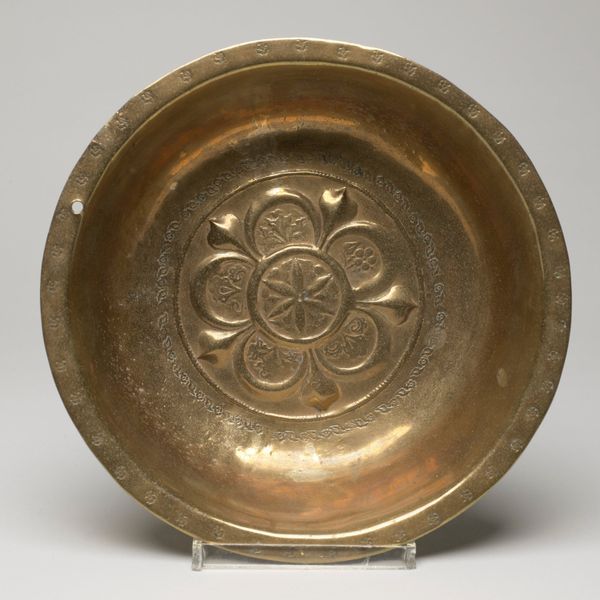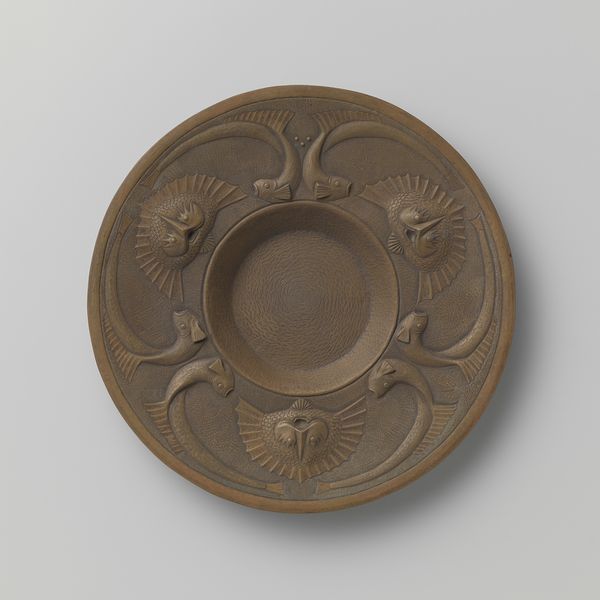
Dimensions: Overall: 2 1/2 × 22 in. (6.4 × 55.9 cm)
Copyright: Public Domain
This salver was made by Elkington & Co., a firm renowned for its electroplated wares, sometime between 1829 and 1963. As we observe its intricate design, we must consider the cultural context that shaped its creation. Electroplating was a booming industry in 19th-century England, and the mass production of such pieces meant that they were relatively affordable to the burgeoning middle classes. With its ornate embellishments featuring mythical creatures, this salver is evocative of ancient styles. What could be the reasons for this conscious historicism? The historicizing aesthetic connects to the cultural landscape of Victorian England, deeply shaped by a renewed appreciation for classical antiquity as a symbol of power. These objects reflected and reinforced the cultural values of the British Empire, imbuing everyday life with historical grandeur. To fully grasp the layers of meaning embedded in this piece, one might delve into design history, exploring pattern books and trade catalogs to discover the aesthetic aspirations of the rising middle class. The meaning of art is always contingent on its historical context.
Comments
No comments
Be the first to comment and join the conversation on the ultimate creative platform.
